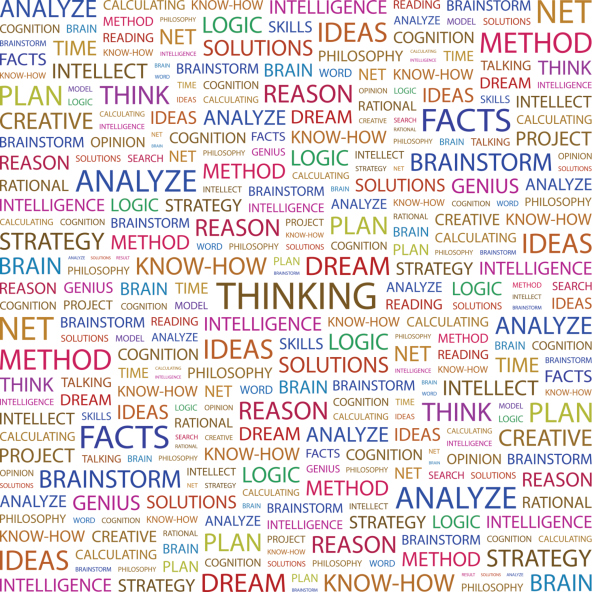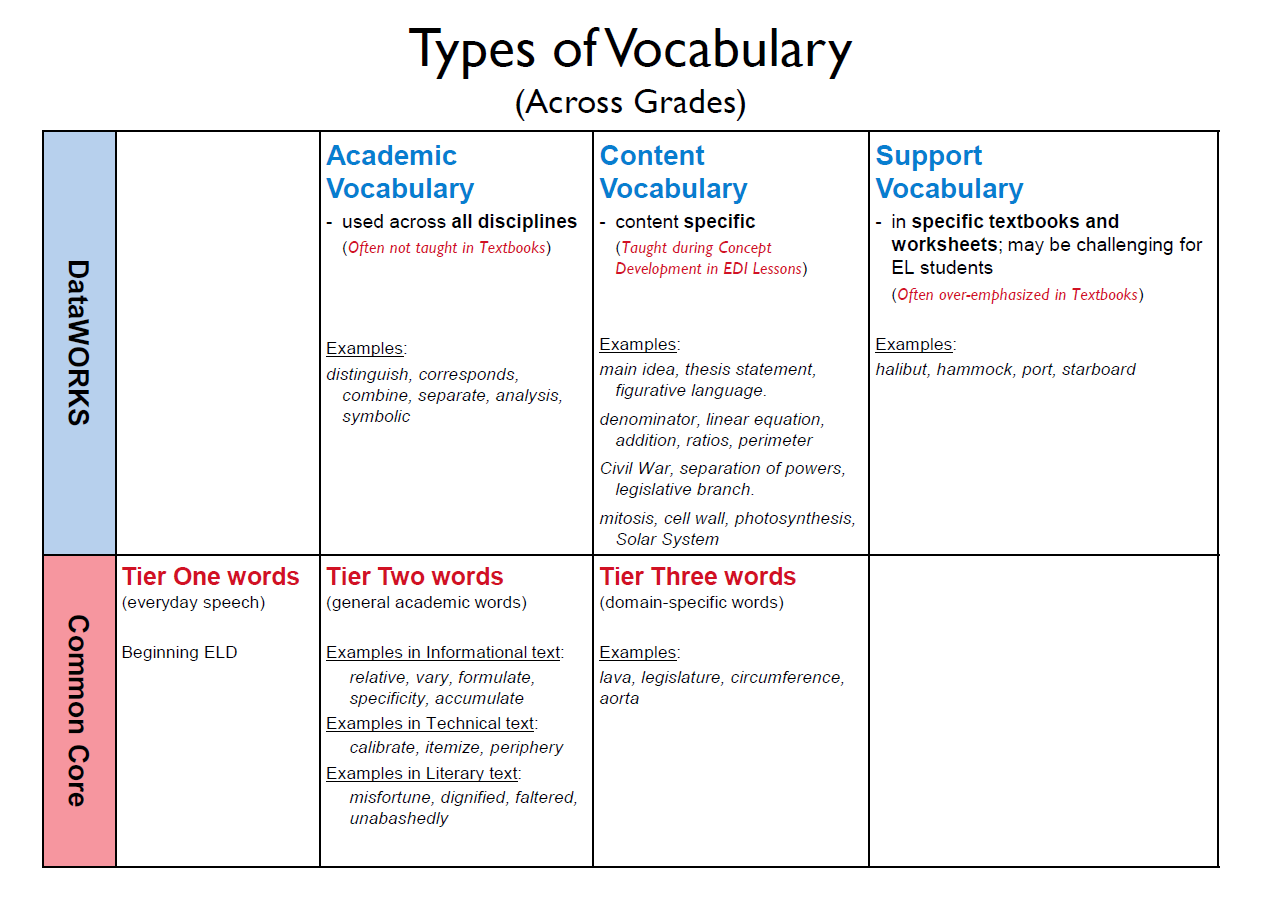 Vocabulary development is a critical aspect of teaching, especially in classes or schools with high populations of English Learners. Differentiating between the types of vocabulary can help teachers decide how much effort to put into teaching particular vocabulary words, as well as which strategies will be most effective when teaching the words. In today’s post, we will discuss the three types of vocabulary identified by DataWORKS, briefly discuss different methods for introducing the types of vocabulary to students, and compare them to the classifications made by the Common Core State Standards.
Vocabulary development is a critical aspect of teaching, especially in classes or schools with high populations of English Learners. Differentiating between the types of vocabulary can help teachers decide how much effort to put into teaching particular vocabulary words, as well as which strategies will be most effective when teaching the words. In today’s post, we will discuss the three types of vocabulary identified by DataWORKS, briefly discuss different methods for introducing the types of vocabulary to students, and compare them to the classifications made by the Common Core State Standards.
DataWORKS’ Types of Vocabulary
Academic Vocabulary
Academic Vocabulary can be defined as words that are not tied to any particular course or content area. These are words that students may be exposed to during any subject or class, whether it is math or social science. Typically, these are words that regularly appear in academic texts and tests, but DataWORKS has found that they are not often explicitly taught. Academic Vocabulary words often show up as the skill words in Learning Objectives, but can occur at any point during a lesson as well. Because of this, it is most effective to teach Academic Vocabulary words as they arise, within the context of a lesson.
Examples
consist, constitute, distribute, establish, indicate, occur, significant, recognize, respond
Content Vocabulary
Contrasted with Academic Vocabulary, Content Vocabulary includes words that are specific to a given domain or subject area, rarely being found outside of their particular content area. Often, these words can be found directly in the content standards and are present as the concept words (typically nouns) in a Learning Objective. Content Vocabulary words are addressed extensively in the Concept Development of a lesson, through the use of clear definitions, examples, and Checking For Understanding questions, as these words and terms are frequently the foundation of a lesson.
Examples
affixes, dialogue, exponents, circumference, cellular respiration, photosynthesis, legislature
Support Vocabulary
The third, and final, type of vocabulary (as identified by DataWORKS) is Support Vocabulary. Support Vocabulary consists of any remaining words that ELs (and all other students) need to know in order to understand a particular sentence or phrase used in a lesson. Support Vocabulary words are unrelated to grade-level concepts and skills and can typically be found in reading passages or text. These words are often not critical for the success of the lesson, so little time needs to be spent on teaching Support Vocabulary beyond ensuring that the students understand any meaning in the context of the lesson.
Examples
starboard, attic, marbled, invested, stocks, calorimeter, galleon, hostler
Common Core Types of Vocabulary
Similarly, the Common Core State Standards classify vocabulary into three categories: Tier One, Tier Two, and Tier Three words.
Tier One
Tier One words consist of everyday speech, which CCSS notes will not present a challenge to native English speakers, though attention to Tier One words may be necessary for English Learners. Regardless of the student population, Tier One words are not meant to be the focus of instruction, as they are often acquired though regular speech.
Tier Two
Tier Two words are referred to in the standards as “general academic words.” Tier Two words closely parallel the DataWORKS category of Academic Vocabulary. Because of their importance in comprehending complex texts and wide applicability to all content areas, CCSS notes that teaching Tier Two words is critical throughout all grades and subjects.
Tier Three
Tier Three words, similar to Content Vocabulary, are domain-specific words – that is, their use is closely tied to a single area of study. These words are necessary for understanding new concepts taught during lessons, and, accordingly, appropriate attention should be paid to Tier Three words.
In Part 2 of this post, we will discuss more detailed strategies for effectively introducing new vocabulary to students.




